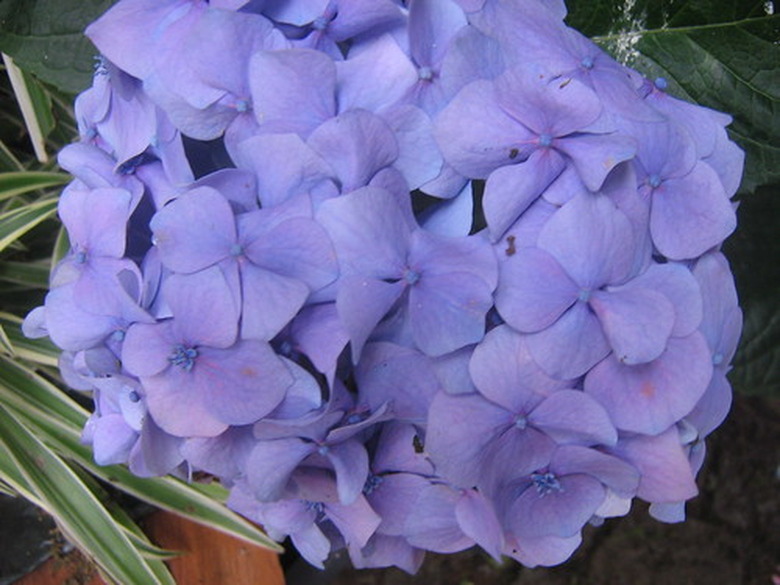Hydrangeas In Hawaii
P?p?hau, the Hawaiian name for a hydrangea, literally means \"snowball.. Overall the climate is too warm and mild for all hydrangea species, except for the bigleaf hydrangea (Hydrangea macrophylla). In the cooler volcanic highlands of Hawai'i, from 2,000 to 5,000 feet, this species grows and blooms year round, with stems reaching 8 feet in height.
P?p?hau, the Hawaiian name for a hydrangea, literally means \"snowball.. Overall the climate is too warm and mild for all hydrangea species, except for the bigleaf hydrangea (Hydrangea macrophylla). In the cooler volcanic highlands of Hawai'i, from 2,000 to 5,000 feet, this species grows and blooms year round, with stems reaching 8 feet in height.
Climate of Hawai'i
The Hawaiian islands enjoy a tropical climate, however higher elevations create a slightly cooler climate that can meet the cool dormancy requirements of several temperate-zoned plants. In the coastal plains, the growing season is year round, with highs in the 80 to 85 degree Fahrenheit range, with lows in the 60 degree range. The higher, sloped elevations also have a year round growing season, with high temp from 65 to 80 degrees and lows in the middle 40s.
Hydrangea Growing Requirements
All hydrangea species are native to regions of the world with cool to cold winters. Without this annual dormancy of low temperatures, hydrangea plants slowly decline and reduce or cease flowering.
- P?p?hau, the Hawaiian name for a hydrangea, literally means \"snowball..
- Overall the climate is too warm and mild for all hydrangea species, except for the bigleaf hydrangea (Hydrangea macrophylla).
- In the cooler volcanic highlands of Hawai'i, from 2,000 to 5,000 feet, this species grows and blooms year round, with stems reaching 8 feet in height.
Overall, the hydrangea plant needs full sun to partial shade exposures in a moist, well-draining soil that is rich in organic matter. In hot summer climates, more shade is required to prevent foliage and flowers from scalding or browning.
Hydrangeas for Highland Hawai'i
Only bigleaf hydrangea (Hydrangea macrophylla), native to Japan, is appropriate for culture in highland Hawai'i, at elevations between 2000 and 5000 feet. On the acidic volcanic-slopes, the soil's pH will cause the long-lasting, summertime flowers to be shades of blue. Blue-lavender flowers occur when soils are slightly more neutral; an alkaline soil will cause blooms to turn pink.
Other hydrangea species, such as smooth hydrangea (Hydrangea arborscens), peegee hydrangea (Hydrangea paniculata) and oakleaf hydrangea (Hydrangea quercifolia) are not well-suited to the mild, barely chilly winter of Hawai'i's highlands, and will grow for perhaps one or two years before dying.
Hydrangeas for Lowland Hawai'i
The hot summers and warm winters of lowland Hawai'i, from sea level to about 2000 feet, is not conducive for enduring hydrangea culture, even the bigleaf hydrangea. Potted hydrangeas can be grown as an annual flower to decorate window boxes, flower beds or containers. Regardless of species of hydrangea grown as a temporary bedding plant, the lack of winter chill prevents any of them from establishing and enduring beyond 3 to 6 months.
- Overall, the hydrangea plant needs full sun to partial shade exposures in a moist, well-draining soil that is rich in organic matter.
- On the acidic volcanic-slopes, the soil's pH will cause the long-lasting, summertime flowers to be shades of blue.
Seasonal House Plants
In all parts of Hawai'i, any hydrangeas forced into flower by florist greenhouses for seasonal gift plants or holiday color can be enjoyed. Realize that if used as an indoor house plant or an outdoor bedding or container plant, any hydrangea will degrade with the lack of winter cold. Only potted bigleaf hydrangeas can be planted outdoors in the highlands with hopes of the plants flourishing.
References
- "Sunset Western Garden Book"; Edited by Kathleen Norris Brenzel; 2007
- InstantHawaii.com: Hydrangea
